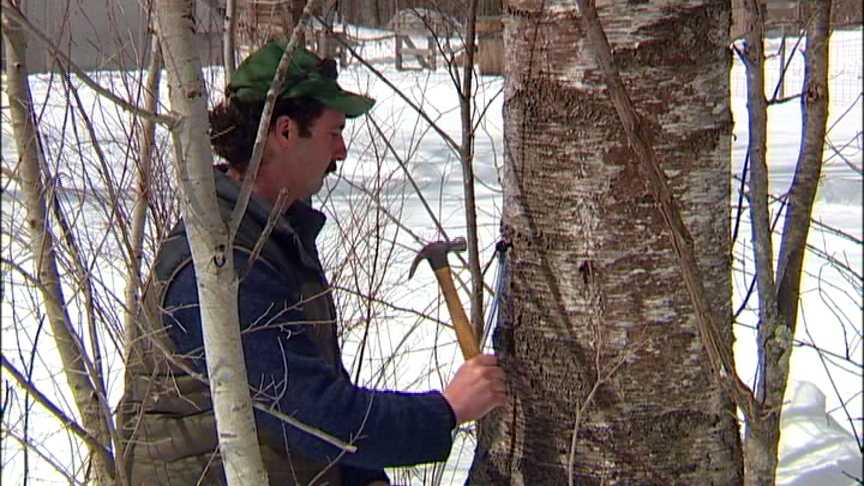Birch sap is more acidic than maple sap, and when birch sap comes into contact with many metals (like aluminum, copper, and galvanized steel), the metal will partially dissolve in the sap. Some of these metals will impart a very unpleasant metallic off-flavor on the sap and syrup. We only use plastic or stainless steel equipment to harvest, transport, store, and process sap. Glass bottles are okay to use too.
Birch sap is more temperature-sensitive than maple sap. The main sugar in maple sap is sucrose, whereas fructose is the main sugar in birch sap (followed closely by glucose). Fructose can burn at lower temperatures than these other sugars, so a good rule of thumb is to prevent any boiling from taking place in the evaporator once the sap begins to darken. We usually let the sap simmer when it gets to this point. Reverse osmosis systems are really important for birch syrup producers since they allow producers to concentrate sap without heat.
Birch sap typically starts to run at the end of maple sugaring season when maple buds swell. When nighttime temperatures are between 30 and 40 ° F and daytime temperatures are between 50 and 60 ° F, birch sugaring season is in full swing. In contrast, maple sap runs when nighttime temperatures are between 20 and 30 °F and daytime temperatures are between 40 and 50 ° F. Birch sugaring season is shorter as well – it’s only 2 or 3 wk long, compared to the 6- to 8-wk long maple sugaring season.
To reach the same viscosity as maple syrup, birch syrup must be finished at a slightly higher concentration. Our syrup is finished around 72 ° Brix.
Paper, or white, birches (Betula papyrifera) are the best trees to make birch syrup from in New England. Based on some preliminary research from 2009 and 2010 done in Lee, NH, and Durham, NH, the sap from paper birches is more concentrated than the sap from other species of birch trees like yellow birch (Betula alleghaniensis) and black, or sweet, birch (Betula lenta). Over the course of the season, paper birch sap is, on average, around 1.0 or 1.2 ° Brix. Sap from yellow and black birches is, on average, around 0.5 or 0.6 ° Brix. Compared with maples, it takes a lot more birch sap to make 1 gal of syrup!

